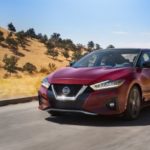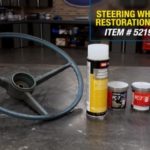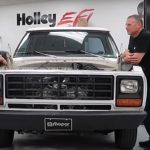IndyCar Completes Short Oval Aeroscreen Test At Richmond
INDYCAR took another important step in the development of its cockpit-protecting Aeroscreen with Tuesday’s two-car test at Richmond Raceway, a 0.75-mile short oval that will play host to the NTT IndyCar Series next June. This was the third of four scheduled Aeroscreen tests this fall and it went so well that recently crowned NTT IndyCar Series champion Josef Newgarden of Team Penske needed only a handful of laps to adjust to the new cockpit surroundings.
“Perception-wise, it was a little different when I first got in (the car) but it took maybe 30 or 40 laps and after that you’re pretty used to it,” Newgarden said. “It’s pretty normal at this point.”
The Richmond test also included five-time NTT IndyCar Series champion Scott Dixon, who also took part in the initial Aeroscreen on-track test with Team Penske’s Will Power on Oct. 2 at Indianapolis Motor Speedway. In addition to testing Firestone tires, Dixon said the Aeroscreen works well on ovals and is nearly ready for action now.
“A little different look with the Aeroscreen,” Dixon said. “It seems like everything is going well with all the testing (INDYCAR has) done. For sure (here), the car’s fine.”

The Aeroscreen is scheduled to make its race debut March 13-15, 2020 at the season-opening Firestone Grand Prix of St. Petersburg and will be used in competition at all 17 races next season, including the June 26-27 event at Richmond Raceway. It will mark the first series race at Richmond Raceway since 2009.
INDYCAR President Jay Frye continues to be pleased with the ongoing development of the Aeroscreen. Aeroscreen Test B-Roll (No Audio). Due to media size please click the link to execute.
“We’ve learned something every time we’ve tested,” Frye said. “It’s about checking the boxes and once the teams get a hold of it they’ll make it even better. They’ll take it to a whole other level.”
The Aeroscreen was developed by Red Bull Advanced Technologies to reduce the risk of driver injury from flying debris or other objects striking the cockpit area. Anchored by titanium framework, the Aeroscreen consists of a polycarbonate laminated screen that includes an anti-reflective coating on the interior of the screen, an anti-fogging device through an integral heating element and tear-offs, all of which will be produced by integrated third-party companies.

The titanium framework mounts in three areas around the cockpit: the chassis centerline, two rear side mounts and roll hoop integration to provide enhanced load-bearing capabilities. The load-bearing is expected to be 150 kilonewtons (kN), which equals the FIA load for the Halo design currently used in Formula One. A kilonewton is equal to approximately 225 pounds.
The visit to Richmond Raceway was the third consecutive week of on-track testing of the Aeroscreen, with each coming on a different type of layout. Previously, INDYCAR staged an Aeroscreen test at a superspeedway – Indianapolis Motor Speedway – and followed with the second at the Barber Motorsports Park permanent road course in Birmingham, Ala. on Oct. 7.
The fourth scheduled test will be Nov. 5 at Sebring (Fla.) International Raceway, a track that simulates street circuits. Four-time Indy car champion Sebastien Bourdais of Dale Coyne Racing with Vasser-Sullivan and James Hinchcliffe of Arrow Schmidt Peterson Motorsports will be the drivers at Sebring.
A focus of this test was to make driving the car a more comfortable experience by redirecting the airflow inside the cockpit through the use of interior inlets.
“That was an improvement,” Dixon said, “especially around the legs and body.”

While the Aeroscreen adds about 60 pounds to the car, Newgarden said he noticed little difference between driving here and without the Aeroscreen at Iowa Speedway, a similar short oval track.
“When I first went out my perception of how much grip the car and how much control I had was slightly different, but I think that’s because it felt foreign,” he said. “You’re not used to having a screen over your head, but after 20 or 30 laps after you got used to it the car feels very similar in terms of how I drive the car or how the car feels compared to a place like Iowa or Gateway — it feels very similar.
“From a tuning standpoint, it didn’t take that much to get it back into the correct window as far as the balance – the balance is very good even with the screen on. From that point, I don’t think the cars are going to change that much going into next year.”
Frye said INDYCAR will stage an open test at Richmond Raceway in late March, bringing all full-time competitors.





